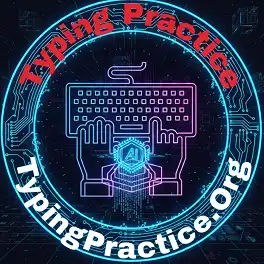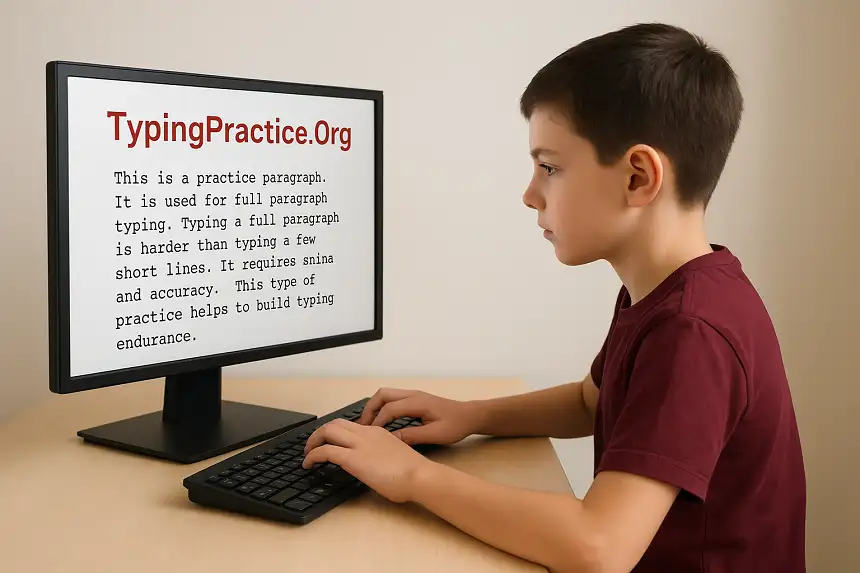Welcome to Day 24 of your 30-day typing course. Today we will not learn about new things—our final revision session for the “Speed & Accuracy” week. Today, we put all the pieces together for practising and looking at how we have learned and achieved our goal. You will face a complete workout designed to test everything you’ve learned. It will challenge your speed on common words. It will test your precision on difficult words. And it will push your focus on long sentences. Think of this as the final exam for this stage of your training. It’s the perfect way to see how far you’ve come before you take on a formal typing test. Let’s see what you’ve got.
Also check other lessons.
| Day 15 Lesson | Practice Typing Words with Numbers (Alphanumeric) |
| Day 16 Lesson | Number Row Typing Practice & Revision |
| Day 17 Lesson | Symbols Typing! @ # $ % |
| Day 18 Lesson | Learn to Type More Symbols (^ & * ( ) ) |
| Day 19 Lesson | Typing Advanced Punctuation (‘ ” – _ + =) |
| Day 20 Lesson | Day 20: Typing Practice for Numbers and Symbols |
| Day 21 Lesson | Speed Building with Common English Words |
The True Meaning of Typing Mastery
So, you have just completed the typing task provided above. We hope you did well, and if not, then the following information is very important to you. Typing is one of the most valuable skills in the digital era, and it can be achieved in very little time but is valuable for a lifetime. Making noise on the keyboard is not an indication of a good typist; a combination of accuracy and speed is the real indication of a good typist.
Imagine a car. Speed is the engine. A powerful engine can go very fast. But what if the steering is off or a part is in bad condition? That is accuracy. A car with a powerful engine but bad steering is not able to run at high speed properly. Powerful engines and other components must be in good condition. Like that, you cannot complete your job quickly without missing a parameter, like speed and accuracy. Accuracy should be about 100%, and speed should be very good.
Deep Dive: The Art of Speed
We learned about speed back on Day 21. Speed isn’t just about frantic finger movement that is very fast. True typing speed is about rhythm and efficiency. It’s about building something called “muscle memory.” Your fingers learn to move to the right keys without you even thinking about it. This happens through repetition.
Today’s practice is all about the most used English words. These tiny words—“the,” “and,” “for,” “you,” “that”—show up everywhere in English. They look harmless, almost boring, which is why most people make mistakes on them without even noticing. The goal is to make these so familiar that your fingers type them automatically. When you don’t have to think about basic words, your mind stays free to focus on harder ones or on what you’re trying to say, instead of worrying about every keystroke.
That’s how you slip into that smooth “flow” feeling where everything just works. Your thoughts move, your fingers follow, and the words land on the screen without effort. You’re not spelling anymore—you’re expressing ideas. But that only happens when the small stuff becomes instinct. Today’s exercise helps build that instinct. Repeating these common words strengthens the pathways your fingers rely on, so you can move through most sentences quickly and save your attention for the tougher parts.
The Foundation of Accuracy
Let’s talk about accuracy again because it deserves attention. Think of accuracy as the part of typing that actually keeps you in control. Speed looks impressive, but if it’s full of mistakes, it slows you down more than you realize. Every mistake forces you to stop, delete, fix, and restart. That whole cycle takes more time than typing slightly slower and getting it right from the start.
Today’s challenge had plenty of confusing pairs and homophones—words that sound the same but differ in spelling and meaning. Things like “their,” “there,” and “they’re,” or “accept” and “except.” Getting these correct isn’t really a speed issue; it’s about taking a moment to think before your fingers hit the keys.
A skilled typist knows when to trust muscle memory and when to pause. For simple words, let your fingers go on autopilot. But when you come across something like “conscientious,” or a tricky “affect/effect” situation, it’s worth slowing down just enough to avoid a mistake. That tiny slowdown saves more time in the long run. Someone typing 60 WPM with really high accuracy will finish more cleanly and efficiently than someone racing at 80 WPM but constantly correcting errors.
How to Analyze Your Results Like a Pro
When you finish a session, don’t just look at your WPM number and move on. Start with your accuracy. If it’s around 95% or higher, that’s a solid place to be. If it’s lower, focus on cleaning that up before chasing more speed. Once your accuracy is steady, then you can push the pace without falling apart.
After that, dig into the details using our AI-powered typing practice tools. See which words or patterns cause trouble. If numbers or symbols slowed you down, go back to the earlier lessons and work through them again before retaking the challenge. Most practice tools will show you exactly which keys or words you mess up the most—use that information. If you keep typing “teh” instead of “the,” it’s a habit your fingers picked up. You can fix it, but only by paying attention to it.
Your weak spots are not something to avoid—they are the easiest place to make real progress. And when you are ready to test your improvement in a clean, uninterrupted run, take our Typing Test and see how everything comes together.





